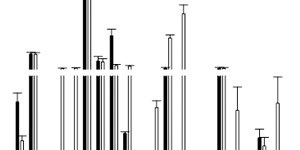Last July, the Gordon Research Conference (GRC) on cannabinoid function in the central nervous system (CNS), the biannual conclave where the elite of cannabinoid research meets, was held in Barcelona.
The GRC are a series of prestigious international scientific conferences that originated in the summer seminar at Johns Hopkins University, organized by Professor Neil Gordon in the 1930s. Currently, almost 200 conferences are held per year covering different fields of knowledge and research. Conference venues are usually chosen for their scenic and isolated nature in order to foster an atmosphere of camaraderie and attendees agree not to publish the content of the presentations in order to encourage free discussion. On this occasion, the organizers of the conference Istvan Katona and Zsolt Lenkei, chose a typical Mediterranean venue: the Gran Hotel Rey Don Jaime de Castelldefels, on top of a hill surrounded by pine trees, where participants could enjoy free moments sunbathing in the pool or on the nearby beach. Every night, after dinner, the patio and pool were also the meeting place where researchers took advantage to network.
Unlike other international conferences related to research with cannabinoids, such as ICRS or IACM, the representation of the "cannabis industry" at the GRC was practically testimonial. Only the two largest companies in Canada (and therefore in the world), Canopy Growth and Aurora, were among the sponsors. While Aurora's representatives remained anonymous, Mark Ware and Marcel Bonn-Miller, medical and clinical research directors of Canopy Growth, respectively, presented papers on the adverse effects recorded by Canopy in its more than 80,000 users. More involved was the participation of the pharmaceutical industry with representatives from Roche, Janssen and Abbie, among others. One of the remarkable aspects was the verification that monoacylglycerol lipase (MAGL), the enzyme responsible for the deactivation of one of the main endocannabinoids, is the fashionable endocannabinoid target in the pharmaceutical industry, given the ubiquity of the inhibitors of this enzyme in the session.
The conference, which was already expected to be dense given the motley title "Improving retrograde transmission maps: New molecular, synaptic and circuit mechanisms", commenced on Sunday afternoon with the inaugural lecture by Dr. Thomas Sudhof, professor at Standford University and winner of the Nobel Prize for Medicine in 2013 for his studies on cell traffic. Presented by Ken Mackie from the University of Indiana, Sudhof spoke about the architecture and mechanisms that control the activity in the synaptic gap (the point of communication between two neurons) and its implication for retrograde neurotransmission, perhaps the most characteristic aspect of the function of endocannabinoids in the CNS. Unlike classical neurotransmitters, such as glutamate or dopamine, that transmit the nerve signal from the presynaptic to the postsynaptic neuron, the endocannabinoids anandamide (AEA) and 2-arachidonoyl glycerol (2-AG) move in the opposite direction precisely to modulate the release of these. However, cannabinoids did not appear in Sudhof's talk until the end and when they did it was very general, which left the audience wanting more.
The SEC: a "weird" system
Monday's session focused on the different actors of the endocannabinoid system (Spanish acronym: SEC): the enzymes that control the formation of endocannabinoids in the morning and the receptors that represent their molecular targets in the afternoon. Professor Daniele Piomelli from the University of California moderated a first stellar panel made up of high-level researchers. Dressed in a summer shirt and sunglasses (in a closed auditorium) that contributed to the Neapolitan godfather image, Piomelli presented the endocannabinoid system (SEC) as a "weirdo" due to the aspects of its physiology that make it unique. Ben Cravatt of the Scripps Institute, the first to clone fatty acid amidohydrolase (FAAH) in 1996, reviewed the clinical history of the development of inhibitors of this enzyme, responsible for deactivating the AEA, and offered new perspectives for the use of these compounds as possible treatments in sleep disorders and cannabis withdrawal.1 Mario Van del Stelt, from the University of Leiden, presented the thesis work of one of his students on NAPE-PLD inhibitors, the enzyme responsible for the formation of anandamide. Van del Stelt's group focuses on developing new chemical tools with which to answer biomedical questions. The LEI-401 inhibitor reduces AEA levels and could therefore represent a pharmacological strategy to reduce the activation of cannabinoid receptors. Then Natsuo Ueda from Kagawa University in Japan and Heather Bradshaw from the University of Indiana (who, with the recent signing of Istvan Katona, together with Ken Mackie and Andrea Hohmann forms one of the most powerful cannabinoid research teams worldwide) spoke. The panel was closed by a young David Marcus, from Vanderbilt University, with a dense and stimulating presentation on the activation by stress of a communication circuit between the cerebral cortex and amygdala modulated by 2-AG and involved in the disorder of anxiety.

ScienceDirect Journal, Molecular Metabolism, Vol. 3, Issue 4
The afternoon session began with Professor Tin Hua from the iHuman institute at the University of Shanghai, with a visually wonderful presentation about the crystalline structures of the CB1 and CB2 cannabinoid receptors and a final observation on the relationship between the two that left the auditorium dumbstruck.2 Next Professor Manuel Guzmán of the Universidad Complutense and CANNA Foundation scientific advisor presented his group's work on the interaction of the CB1 receptor with the GAP43 protein, involved in neurodevelopment. Ruth Ross, from the University of Toronto, presented her work with negative allosteric modulators of the CB1 receptor as potential treatments for psychotic disorders. Since Robert Laprairie characterized cannabidiol (CBD) as a negative allosteric modulator of CB1 receptors in 2015, this type of ligands has been much researched. In fact, Laprairie himself came with a large representation of students who presented up to six papers in the same session. The last presentation of the day was given by Giovanni Marsicano from the University of Bordeaux, one of the most prolific cannabinoid researchers in Europe. In his irreverent style, Marsicano presented his group's work on one of his most controversial contributions to the field: the presence of CB1 cannabinoid receptors in mitochondria and its possible function in the body's energy balance and its relevance in cognitive or behavioural processes.
Peripheral SEC and memory permanence
The second day began with a panel presented by Professor Vicenzo diMarzo that focused on how the endocannabinoid system controls the processes that occur in the periphery, that is, outside the central nervous system, and communication between these two aspects of the organism. The inaugural talk was given by George Kunos, from the US National Institute of Health, who presented data on various clinical trials about the role of the peripheral CB1 receptor in metabolic syndrome. In the second part of his talk, Kunos described the control that this receptor exerts on the motivation to consume alcohol through the axis that communicates the intestine with the brain and how peripheral CB1 could represent a therapeutic target in the treatment of alcoholism. Other outstanding talks of the day were those of Patrice Cani, of the Catholic University of Louvain, Andrés Ozaita, of the Pompeu i Fabra University of Barcelona and Daniela Cota, of the Neurocentre Magendie in Bordeaux. Cani reviewed his studies on the role of intestinal flora (microbiota) in neuronal processes, focusing on the role of intestinal NAPE-PLD as a key sensor in the control of food intake and energy metabolism. Andrés Ozaita used Dalí's painting "The persistence of memory" to present a very interesting talk about the role of the central and peripheral SEC in the consolidation of memories and how the persistence of memory is controlled by the peripheral endocannabinoid tone in a process in which the adrenal glands play a fundamental role. Daniela Cota closed Tuesday's session with a talk about the role of mitochondrial CB1 on energy homeostasis, the connection between pancreatic islets and neurons,3 and the possible resurgence of a drug that has been vilified as Rimonabant, a CB1 antagonist, in a peripheral version that does not cross the blood brain barrier for the treatment of metabolic syndrome.

La persistencia de la memoria. Salvador Dalí
Metaplasticity by day, Medical Marijuana at night
Wednesday's event featured an intensive morning session in which Dr. Marta Navarrete, of the Cajal/CSIC Institute in Madrid, presented her studies on the communication between neurons and glial cells, specifically astrocytes. Glial cells assist neurons in a multitude of key functions for brain activity, and communication between them is tightly regulated. The endocannabinoid system plays an important role in this communication, both in normal state and in pathological processes. The afternoon panel, presented by Ivan Solstesz, an epilepsy expert at Standford University, focused on the use of cannabinoids, specifically cannabidiol (CBD) in epileptic disorders. For some reason, the term "Marijuana", generally reviled in academic settings, managed to sneak into the title of a panel mostly consisting of American researchers. Richard Tsien from the University of New York presented some refreshing data about how the GPR55 receptor could mediate the anticonvulsant effect of CBD, thus interrupting a vicious circle in which CB1 would not be involved.4 Nephi Stella from the University of Washington State talked about CBD in the context of the Dravet syndrome and some animal models that might be useful to study this disorder and Elisabeth Thiele from the Massachusetts Hospital shared the clinical data that led to the approval of Epidiolex by the FDA last year. Professor Jonathon Arnold, from the University of Sydney, Australia, closed the session. Arnold's work is part of the Lambert Initiative, a philanthropic program for the study of the therapeutic use of cannabis.

ScienceDirect Journal, Trends in Endocrinology and Metabolism, Vol. 26, Issue 10
The day was culminated with the "Castellers", who invited attendees to participate in a six-story human tower for everyone's enjoyment. The next morning the GRC organizers of the cannabinoid function in the SNC to be held in 2023 were selected (those for 2021, Matt Hill and Sachin Patel, were elected two years ago). In a timid attempt at gender equality, Mario Stelt and Miriam Melis from the University of Cagliari were selected. Melis was responsible for organizing the GRC Power Hour on the first day along with Raffaella Tonini, from the Italian Institute of Technology, designed to address the challenges faced by women in scientific research and other diversity and inclusion issues. During this activity it was reported that only two women have held an organizational position in this conference. Miriam will be the third in twenty years.
1. D'Souza DC, Cortes-Briones J, Creatura G, et al. Efficacy and safety of a fatty acid amide hydrolase inhibitor (PF-04457845) in the treatment of cannabis withdrawal and dependence in men: a double-blind, placebo-controlled, parallel group, phase 2a single-site randomised controlled trial. The Lancet Psychiatry. 2019;6(1):35-45. doi:10.1016/S2215-0366(18)30427-9
2. Li X, Hua T, Vemuri K, et al. Crystal Structure of the Human Cannabinoid Receptor CB2. Cell. 2019;176(3):459-467.e13. doi:10.1016/j.cell.2018.12.011
3. Otter S, Lammert E. Exciting Times for Pancreatic Islets: Glutamate Signaling in Endocrine Cells. Trends Endocrinol Metab. 2016;27(3):177-188. doi:10.1016/j.tem.2015.12.004
4. Sylantyev S, Jensen TP, Ross RA, Rusakov DA. Cannabinoid- and lysophosphatidylinositol-sensitive receptor GPR55 boosts neurotransmitter release at central synapses. Proc Natl Acad Sci U S A. 2013;110(13):5193-5198. doi:10.1073/pnas.1211204110


